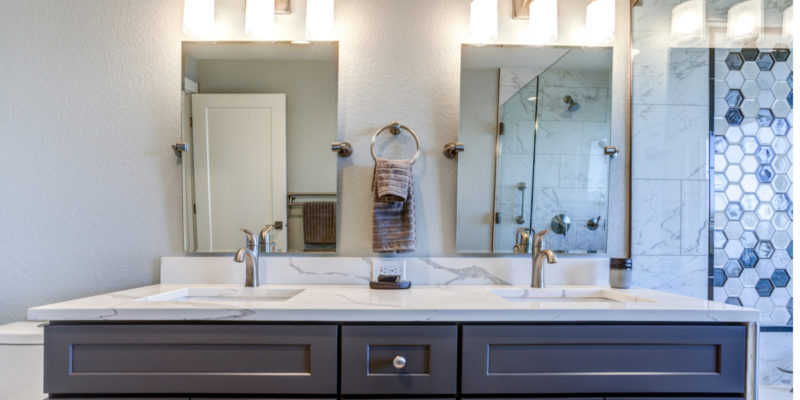Whether you are doing a complete overhaul of your kitchen, designing a new kitchen for your new build, or simple upgrading your cabinetry, there are lots of choices to make in your project. Cabinets alone offer options even before you get to color, style, and hardware selections. One of the first choices you have to make is whether you want inset cabinets, framed cabinets, or frameless cabinets in your kitchen.
As you consider your decision, remember that cabinet choice is key to having enough storage space and access to your kitchen items when you need it. One type of cabinet delivers when maximizing space, reducing clutter, and providing a sleek contemporary feel, but before we go there, lets explain the options available, so you can make the best choice for your kitchen.
Inset, Framed, Frameless Cabinets – What is the Difference?
Framed cabinets and inset cabinets are similar in part of their design. Both feature a face frame on the front of the cabinet, which as the fourth side of the cabinet makes it stronger. A framed cabinet has its door hinges attached to the face frame, making the doors overlay the face frame. Inset cabinets are like frames cabinets in that they have a face frame, but with inset cabinetry, the doors are flush, set into the frame. With inset cabinetry, precision is crucial as doors/drawers must be perfectly aligned and fit squarely. Framed and Inset Cabinetry is the traditional American style cabinetry. Frameless cabinets, as the name implies, have no face frame, meaning the doors are attached directly through the side panels giving greater access to the cabinet and affording a cleaner sleeker appearance. Frameless cabinetry is the modern style popular in European kitchens.
The Benefits of Frameless Cabinets
As mentioned above frameless cabinets maximize space while providing a sleek and contemporary style to the kitchen. In addition, because both the drawer and door margins are less than one-quarter inch, there is greater ability to customize frameless cabinets. Because frameless cabinets have no face frame the entire interior of the cabinet allows for storage. While face frames contribute to strength, the face frame limits access to the cabinet space. Frameless cabinets are also known as full-access design for this reason. In addition, frameless cabinets do not have the vertical partition (known as a stile), which makes it difficult to insert larger objects like dinner plates and serving pieces without maneuvering them manually into the cabinet. Without the vertical stile, the risk for damage to dishes (breaks, cracks, chips) is greatly reduced. In frameless cabinets, storage space is also increased in drawers, as there is no frame face to limit the size of the drawer box.
In frameless cabinets, shelving is adjustable, because doors are flat. Drawers are bigger, as is cabinet space because there is no frame face to take up valuable storage space. The bulk of framed cabinets is eliminated. Frameless cabinets leave you with a sleeker, cleaner, and classier look, perfect for today’s modern living. Plus, frameless cabinets provide much needed additional storage space, allowing you to declutter and put all your favorite kitchen tools, gadgets, pots, pans, dishes, and glasses within easy reach.

